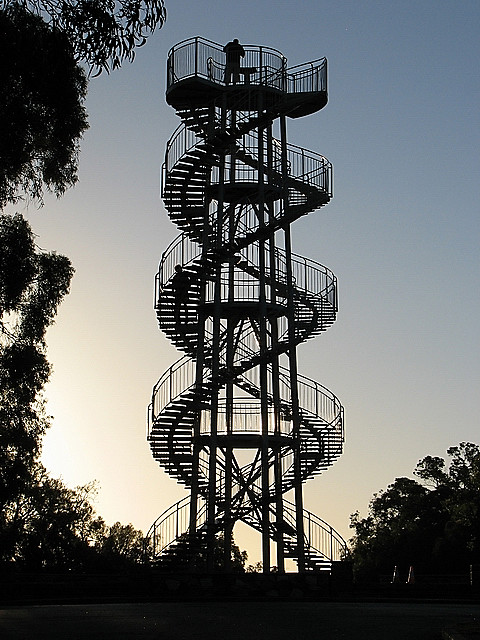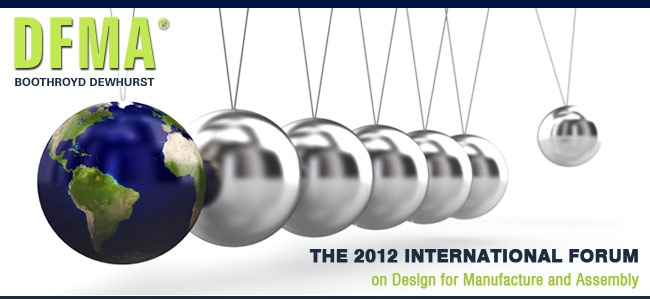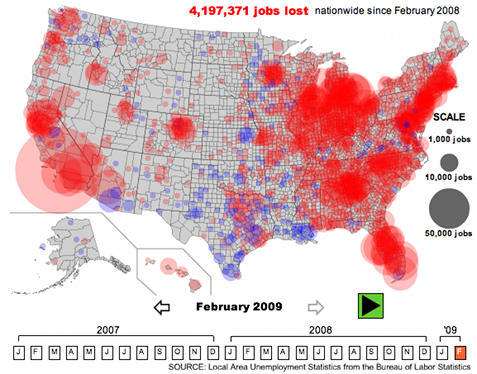Archive for the ‘Uncategorized’ Category
If you’re not learning, what are you doing?
 You can’t learn until you acknowledge you don’t understand.
You can’t learn until you acknowledge you don’t understand.
No one knows everything. No sense pretending, especially if you want to learn.
If you don’t know what you want to learn, any learning will do.
If you’re not surprised, the learning could have been deeper.
When you learn it won’t work it’s not failure, it’s learning.
When assumptions are formalized, it’s possible to learn they’re wrong.
Hypotheses are for the laboratory and learning objectives are for everywhere else.
Where learning is useful, relearning is wasteful.
When is it best to learn it won’t work? Then why do wait so long to learn it?
Last year’s learning is out of fashion and it’s time to freshen up your wardrobe.
If you’re surprised, congratulations.
Where doing is activity, learning is progress.
When you’re an expert, you’ve got to learn to unlearn.
Learning quickly is good, but learning the right thing is better.
The best thing to learn is how to learn.
Image credit – NASA Goddard Space Flight Center
You can’t control much with innovation, but you can control how you allocate resources.
 In business, the only direct lever to pull is resource allocation. The people are already on the books, just change what they work on. But pulling that off is difficult.
In business, the only direct lever to pull is resource allocation. The people are already on the books, just change what they work on. But pulling that off is difficult.
No need to wait for new hires, just move resources from one project to another. Stop project A and start project B. Simple, right? Not so much. Emotional attachment causes project A to defend their resources and project B to complain the resources haven’t moved. Resources will be slow to flow.
No need to take the time to develop new capability, just reassign capable resources from business 1 to business 2 and watch progress unfold. No problem, right? Wrong. There’s immense organizational drama from prioritizing one business over another. Again, the pace of resource flow will be glacial.
And with innovation, the drama is doubled. It’s threatening when resources flow from mainstream projects with tangible (but small) returns to more speculative projects with highly uncertain returns. But that’s what must happen.
If there’s a mismatch between the words and resource allocation, believe resource allocation.
If the innovation banners are plastered on all the walls and everyone has the tee shirt, yet the resources don’t flow to the innovation work, it’s an innovation farce. Run away. Here’s what the four HOWs of innovation look like through the lens of resource allocation.
How To Start. Define the yearly funding level for innovation resources that is independent of the yearly planning process. In short, create an innovation tax at a fixed percentage of revenue. This gets funded before anything else. It’s the pay-yourself-first approach to innovation. And when the money is allocated and the resources flow, there’s no need for banners and tee shirts. Alignment comes with the money.
Next, choose a leader to put in place standing processes to continuously funnel project ideas into a common hopper. One pile for all ideas – university research, mergers and acquisitions, voice of the technology, voice of the customer (direct observation and listening), patents and YouTube videos of purposeful misuse of your product.
How To Choose. Define funding levels across the various flavors of projects in the portfolio and set up a standing meeting for senior leaders to choose the best projects. This selection process is light on analysis and heavy on judgment, so allocate leaders who are not afraid to use good judgement. And set up a standing meeting with the CEO to pace the selection work (make sure senior leaders allocate their time.)
How To Execute. Internal, external, or partner, the work defines the right way to allocate resources. Based on the work, choose the right organization and the best leader and fully staff the project before considering a second project. The most popular failure mode is running too many projects in parallel and getting none done. The second popular failure mode forgetting to fund the support resources needed for innovation. Allocate money for tools, time, training and a teacher. Establish a standing meeting where senior leaders review the projects. This must be outside the review process normal projects.
How To Improve. No one ever allocates time to do this. To get the work done, trick the system and include the work as a standing agenda item in the How To Execute review meetings. Find a problem, fix a problem. Improve as you go.
Allocate the best resources to the best projects and make sure senior leaders allocate time to the innovation work. The best predictors of successful innovation are the character of the fully-staffed, fully-funded projects and the character of people that run them.
Image credit – conorwithonen
The Certainty of Uncertainty
 When the output cannot be predicted, that’s uncertainty. And if there’s one thing to be certain of it’s uncertainty is always part of the equation.
When the output cannot be predicted, that’s uncertainty. And if there’s one thing to be certain of it’s uncertainty is always part of the equation.
With uncertainty, the generally accepted practice is minimization, and the method of choice is to control inputs. The best example is a high volume manufacturing process where inputs are controlled to reduce variation of the output (or reduce the uncertainty around goodness). Six Sigma tightens the screws on suppliers, materials, process steps, assembly tools and measurement gear so the first car off the production line is the same as the last one. That way, customers are certain to get what they’re promised. Minimization of uncertainty makes a lot of sense in the manufacturing analogy.
But there’s no free lunch with uncertainty, and the price of all this control is inflexibility. The manufacturing process can do only what it’s designed to do – to make what it was designed to make – and no more. And it can provide certainty of output only over a finite input range. Within the appropriate range of inputs there is certainty, but outside that range there is uncertainty. Even in the most well defined, highly controlled processes where great expense is taken to reduce uncertainty, there is uncertainty. Even the best automotive assembly lines can be disrupted by things like tsunamis, earthquakes, epidemics and labor strikes (100% certainty doesn’t exist). But still, in the manufacturing context minimization of uncertainty is a sound strategy.
When the intent of a process is to do things that have never been done and to bring new things to life, minimization of uncertainty is directionally incorrect. Said a different way, creativity and innovation demand uncertainty. More clearly – if there’s no uncertainty in the trenches, there’s no innovation.
The manufacturing analogy has been pushed too far from the factory. Just as Six Sigma has eliminated variation (and uncertainty) from things it shouldn’t (creativity work), lean and its two uncertainty killers (best practices and standard work) have been jammed into the gears of innovation and gummed up the works.
Standard work and best practices were invented to reduce variation in how work is done with the objective of, you guessed it, reducing uncertainty. The idea is to continuously improve and converge on the right recipe (sequence of operations or process steps) so the work is done the same way every-day-all-day. By definition, innovation work (the process steps) is never done the same way twice. The rule with best practices is simple – it should be reused every time there’s a need for that exact process. That makes sense. But it makes no sense to use a best practice when a process is done for the first time.
[Okay, the purists say that all transactional elements of innovation should follow standard work, and theoretically that’s right. But practically, the backwash of standard work, even when applied to transactional work, infects the psyche of the innovator and reduces uncertainty where uncertainty should be bolstered.]
Uncertainty is an important part of innovation, but it should not be maximized (it’s as inappropriate as minimizing). And there is no best practice for calculating the right amount. To strike a good balance, hold onto the fact that uncertainty and flexibility are a matched pair, and when doing something for the first time flexibility is a friend. And when standard work and best practices are imposed in the name of innovation efficiency, remember it’s far more important to have innovation effectiveness.
Image credit – NMK Photography
Innovation’s Double Helix
 A technology without a market is as valuable as a market without a technology – they’re both worthless. At one end of the spectrum you have something interesting running in the lab and at the other you have an interesting insight around a new market. But one won’t do, and from either end of the rainbow your quest is to find the pot of gold at the other end.
A technology without a market is as valuable as a market without a technology – they’re both worthless. At one end of the spectrum you have something interesting running in the lab and at the other you have an interesting insight around a new market. But one won’t do, and from either end of the rainbow your quest is to find the pot of gold at the other end.
Scenario A – As a marketing leader you went out into the market, heard the unhearable, saw the unseeable and the gears of your mind gnashed and clunked until it brought into being a surprising insight. Now it’s time to come back to the technical community in search of a technology. For this clarity is key, but for technologists the voice of the customer is a foreign language, and worse, you’ve invented a new dialect.
Step 1. Dig up marketing literate for an existing product that’s the closest to satisfying your surprising market insight.
Step 2. In front of the technologists mark up the existing marketing literature so it satisfies the surprising insight. (Think – same as the old product, but different.) Starting with something they know and building from there helps the technologists see the newness from the grounded context of existing products and technologies.
Step 3. Then, with the technologists, draw a hand sketch of the customer using the new product in a new way, then underneath the sketch write a single sentence that describes the valuable customer outcome (from the customer’s perspective).
Step 4. Together with the technologists define the new design elements of the prouct to make the product perform like the sketch and satisfy the valuable customer outcome.
Step 5. With the technologists go out to the lab and make a prototype of the new design element, bolt it on to an existing product platform and use the product in the manner described in your sketch. If it doesn’t work as it should, modify the prototype until it does.
Step 6. Take the prototype to the market and ask them if it delivers on the valuable customer outcome. If it doesn’t, modify the prototype until it does. And when it does, launch it.
Scenario B – As a technologist you went out into the lab, thought the unthinkable, pondered the impossible and the gears of your mind gnashed and clunked until it brought into being a surprising technology. Now it’s time to come back to the marketing community in search of a market. For this clarity is key, but for marketing the voice of the technology is a foreign language, and worse, like your counterpart in Scenario A, you’ve invented a new dialect.
Step 1. Dig up the product spec for an existing product that’s closest to your new technology.
Step 2. In front of the marketers mark up the product spec so it describes the functionality of the new technology. (Think – same as the old product, but different.) Starting with something they know and building from there helps the marketers see the newness from the grounded context of existing products and technologies.
Step 3. Again in front of the marketers, define the new elements of the technology that make the product perform like it does.
Step 4. With the marketers, draw a hand sketch of the customer using the new product in a new way, then underneath the sketch write a single sentence that describes the valuable customer outcome (from the customer’s perspective).
Step 5. Together with the marketers and the prototype go out to the field and let customers use it as THEY see fit. If they use it in the manner described in your sketch, you’ve identified a potential customer segment. If they don’t, modify the sketch and valuable outcome sentence until it matches their use, or seek out other customers who use it like the sketch.
Step 6. Decide on the most interesting product use and customer outcome, and take the prototype to the target customers. Ask them if it delivers on the valuable customer outcome. If it doesn’t, investigate different customer segments until it does. And when it does, launch it.
Scenarios A and B are contrived. In scenario A, product use and valuable customer outcomes are static and the technology changes to fit them. In Scenario B, it’s reversed – static technology and dynamic product use and customer outcomes. While the scenarios are helpful to see the work from two perspectives and define the end points, that’s not how it happens.
Innovation is always a clustered-jumble of the two scenarios. In fact it’s more like a double helix where the customer strand winds around the technology and the technology strand winds around the customer. One strand takes the lead and mutates the other, which, in turn, spirals learning in unforseen directions.
There’s no getting around it – market and technology co-evolve. There’s no best practice, there’s no best orgainizational structure, and breaking things down the smallest elements won’t get you there.
Instead of spending time and money sequencing the innovation genome, take your cue from nature – try stuff and do more of what worked and less of what didn’t.
And remember the cardinal rule – the organization with the best genes wins.
Image credit – kool_skatkat
Marketing’s Holy Grail – Emerging Customer Needs
 The Holy Grail of marketing is to identify emerging customer needs before anyone else and satisfy them to create new markets. It has been a long and fruitless slog as emerging needs have proven themselves elusive. And once candidates are identified, it’s a challenge to agree which are the game-changers and which are the ghosts. There are too many opinions and too few facts. But there’s treasure at the end of the rainbow and the quest continues.
The Holy Grail of marketing is to identify emerging customer needs before anyone else and satisfy them to create new markets. It has been a long and fruitless slog as emerging needs have proven themselves elusive. And once candidates are identified, it’s a challenge to agree which are the game-changers and which are the ghosts. There are too many opinions and too few facts. But there’s treasure at the end of the rainbow and the quest continues.
Emerging things are just coming to be, just starting, so they appy to just a small subset of customers; and emerging things are new and different, so they’re unfamiliar. Unfamiliar plus small same size equals elusive.
I don’t believe in emerging customer needs, I believe in emergent customer behavior.
Emergent behavior is based on actions taken (past tense) and is objectively verifiable. Yes or no, did the customer use the product in a new way? Yes or no, did the customer make the product do something it wasn’t supposed to? Did they use it in a new industry? Did they modify the product on their own? Did they combine it with something altogether unrelated? No argument.
When you ask a customer how to improve your product, their answers aren’t all that important to them. But when a customer takes initiative and action, when they do something new and different with your product, it’s important to them. And even when just a few rouge customers take similar action, it’s worth understanding why they did it – there’s a good chance there’s treasure at the end of that rainbow.
With traditional VOC methods, it has been cost prohibitive to visit enough customers to learn about a handful at the fringes doing the same crazy new thing with your product. Also, with traditional VOCs, these “outliers” are thrown out because they’re, well, they’re outliers. But emergent behavior comes from these very outliers. New information streams and new ways to visualize them are needed to meet these challenges.
For these new information streams, think VOC without the travel; VOC without leading the witness; VOC where the cost of capturing their stories is so low there are so many stories captured that it’s possible to collect a handful of outliers doing what could be the seed for the next new market.
To reduce the cost of acquisition, stories are entered using an app on a smart phone; to let emergent themes emerge, customers code their own stories with a common, non-biasing set of attributes; and to see patterns and outliers, the coded stories are displayed visually.
In the past, the mechanisms to collect and process these information streams did not exist. But they do now.
I hope you haven’t given up on the possibility of understanding what your customers will want in the near future, because it’s now possible.
I urge you to check out SenseMaker.
Occam’s Razor For Innovation
 There are many flavors of innovation – incremental, disruptive, and seven flavors in between. And there is lots of argument about the level of innovation – mine’s radical and yours isn’t; that’s just improving what we already have; that’s too new – no one will ever buy it. We want to label the work in order to put it in the right bucket, to judge if we’re doing the right work. But the labels get in the way – they’re loaded with judgments, both purrs and snarls.
There are many flavors of innovation – incremental, disruptive, and seven flavors in between. And there is lots of argument about the level of innovation – mine’s radical and yours isn’t; that’s just improving what we already have; that’s too new – no one will ever buy it. We want to label the work in order to put it in the right bucket, to judge if we’re doing the right work. But the labels get in the way – they’re loaded with judgments, both purrs and snarls.
Truth is, innovation work falls on a continuum of newness and grouping them makes little sense. And, it’s not just newness that matters – it’s how the newness fits (or doesn’t) within the context of how things happen today and how customers think they should happen tomorrow. So what to do?
Customers notice the most meaningful innovations, and they notice the most meaningful ones before the less meaningful. Evaluate the time it takes a customer to notice the innovation and there may be hope to evaluate the importance of the innovation.
The technology reduces cost, and at the end of the month when the numbers are rolled up the accountants can see the improvement. This is real improvement, but there’s a significant lag and the people doing the work don’t see it as meaningful. This one’s a tough sell – buy this new thing, train on it, use it for three months, and if you keep good records and do some nifty statistics you’ll see an improvement.
The technology reduces scrap, and at the end of the week the scrap bin will be half full instead of fully full. Scrap is waste and waste reduction is real improvement. This is an easier sell – buy it and train on it and at the end of the week you’ll notice a reduction in scrap. This is important but only to those who are measured on scrap. And today the scrap is emptied every week, now we can empty it every other week. The time to notice is reduced, but the impact may not be there.
The technology increases throughput, and at the end of the shift the bins will be fuller than full. Here – try it for a shift and see what you think. If you like it, you can buy it. I’ll be back tomorrow with a quote. This is noticeable within eight hours. And at the end of eight hours there are more things that can be sold. That’s real money, and real money gets noticed.
The technology makes the product last two hours instead of one. Here – try it for a couple hours. I’ll go get a coffee and come back and see what you think. You won’t have to stop the machine nearly as often and you’ll put more parts into finished goods inventory. The technology gets noticed within two hours and the purchase order is signed in three.
Where the old technology was load, this is quiet. Don’t bother with ear protection, just give it a go. Pretty cool, isn’t it. Go get your boss and I’ll sell you a couple units right now. This one shows its benefits the end user right away – first try.
The most meaningful innovations get noticed instantly. Stop trying to label the innovation and simply measure how long it takes your customer to notice.
Upcoming Workshop on Systematic DFMA Deployment – June 2012
Systematic DFMA Deployment – How To Implement for Increased Profits
 I am running a half-day workshop on June 13 in Providence, RI. The workshop is part of the 2012 International Forum on Design for Manufacturing and Assembly. I will focus on how to increase profits and incorporate DFMA into your product development process.
I am running a half-day workshop on June 13 in Providence, RI. The workshop is part of the 2012 International Forum on Design for Manufacturing and Assembly. I will focus on how to increase profits and incorporate DFMA into your product development process.
The conference (June 11-13) is the yearly gathering of the world’s DFMA experts. It is THE place to learn about DFMA and see examples and results from leading companies.
(I am also presenting a paper at the conference – Conference Program).
I urge the product development community to attend.
I hope to finally meet you in person.
Off Track
a
Did real kid stuff with kids?
Got real dirt on your knees?
Went for a walk, simply to walk?
Went outside and counted the stars?
Shut your eyes and listened to birds?
Spent seven days with just your spouse?
Traveled to meet an old friend face-to-face?
Sat quietly in your favorite spot for an hour?
a
What does that say?
The carry-over task and fear of success
 The to-do list, whether digital or analog, we’ve all got ’em. We cross things off and put things on (mostly the latter); the list evolves – it’s a living thing.We put energy into adding things, tasks, action items. (You can’t go to a meeting without collecting one of them.)
The to-do list, whether digital or analog, we’ve all got ’em. We cross things off and put things on (mostly the latter); the list evolves – it’s a living thing.We put energy into adding things, tasks, action items. (You can’t go to a meeting without collecting one of them.)
But most telling to me are the tasks that stay on week-on-week, the carry-over tasks. We never do them, but we never take them off the list. What are they? Why don’t we do them? Why don’t we just take them off the list?
For tasks we complete, the fundamental motivating force is fear, fear of not getting them done, the consequences of failure. The deal is clear: we don’t complete the task, and something bad will happen to us. We know what will happen to us if we fail, we know the consequences of failure.
But the carry-over task is altogether a different beast. It’s an uncompleted task where the fundamental motivating force is still fear, but this time it’s the fear of getting them done, the consequences of success. The deal is absolutely unclear: we complete the task, and something good will happen to us. Though, this time we don’t know what will happen to us if we succeed, we don’t know the consequences of success.
With the carry-over task, we must supply our own motivation, our own energy, to overcome the consequences of something good happening to us us. Strange, but true.
With success comes visibility; with visibility comes judgement; with judgement comes fear, fear of being un-liked. We will be seen for what we are, and we’re afraid of what people will think. Some won’t like us, and that’s scary.
The fear of success is real, and it’s a tough nut. Some many not want to crack it, and that’s okay. For those that do, consider this: today, as you are, some don’t like you, so how could success be worse? With success, at least they’ll know why they don’t like you: because you succeeded.
The Job Loss Implosion
If you do one thing, click this link. (Or the graphic itself.) Please. You’ll be sent to a page where you can watch an animation of US job losses. I was debilitated after watching the implosion.
Here’s how I reacted to the animation:
Disbelief. No way. Not real. I checked the data. It’s real.
Fear. Look what happened to my country!
Anger. Why isn’t everyone talking about this? Why aren’t we doing something about this? Why are we saying the economy is on the mend? That’s crap, I-want-to-get-reelected type crap. (To be clear, I think great progress has been made.) Truth is it cannot be mended with the current approach. It cannot. If possible at all, it will take a borderline-Draconian approach, where cuts are made and taxes are raised to radically fund innovation, technology, and manufacturing. (Think energy, energy, energy.) Reinvestment in ourselves.
Sadness. Our lifestyle, as we know it, is over. The American Way has imploded; we just don’t have the courage to face it yet.
Sadness. This is not good for my kids. (And that’s when I changed my thinking.)
Hope. We can do something about this. It will be exceedingly difficult, but we can do it. We’re smart enough. We’ll have to make hard choices, choices where we get less and pay more – a net reduction in our standard of living. It will take sacrifice, real sacrifice. Sacrifice at the standard of living level, sacrifice inline with WWII-caliber, go-without sacrifice. Sacrifice to free up radical amounts of money to invest in our country, in our innovation, in our technology, and in ourselves. I’m talking about self-investment at levels that make the Apollo Program look like chump change, self-investment that makes the war look like a bargain. The toughest part, however, is how to elect politicians on a platform of get less and pay more, a platform of sacrifice, of tough choices. I’m not talking about talking about tough choices, but actually making tough choices, choices for the common good. I’m talking about a platform that demands true, unselfish behavior by all.
Action. I will write to raise awareness. I will post to raise awareness. I will tweet to raise awareness. I will speak (if not yell) to raise awareness. I will continue to educate on how to fix it. I will reach out to people who can make a difference. I will pester them. I will pester them again. For my kids and yours, I will not give up.
What will you do?



 Mike Shipulski
Mike Shipulski